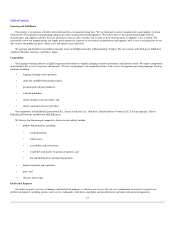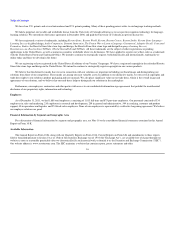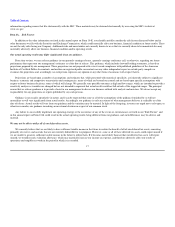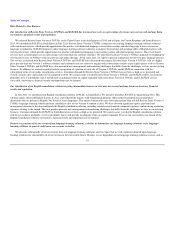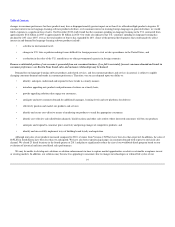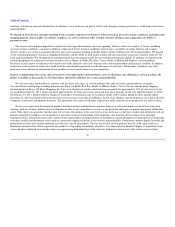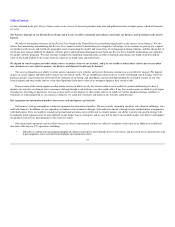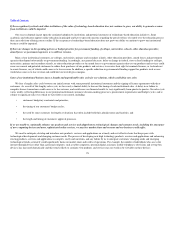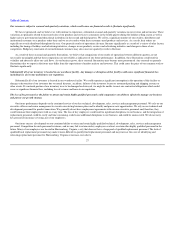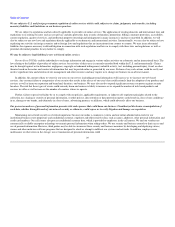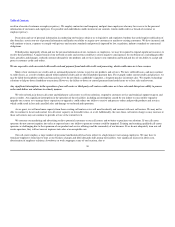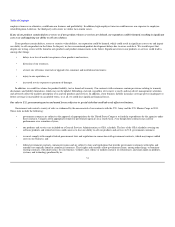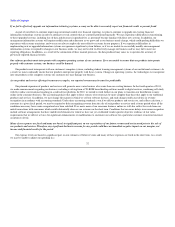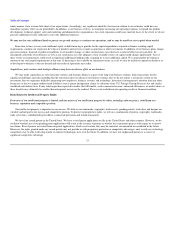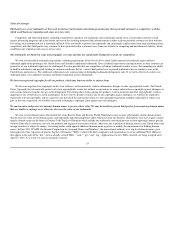Rosetta Stone 2011 Annual Report Download - page 27
Download and view the complete annual report
Please find page 27 of the 2011 Rosetta Stone annual report below. You can navigate through the pages in the report by either clicking on the pages listed below, or by using the keyword search tool below to find specific information within the annual report.
Table of Contents
If the recognition by schools and other institutions of the value of technology-based education does not continue to grow, our ability to generate revenue
from institutions could be impaired.
Our success depends in part upon the continued adoption by institutions and potential customers of technology-based education initiatives. Some
academics and educators oppose online education in principle and have expressed concerns regarding the perceived loss of control over the education process
that can result from offering courses online. If the acceptance of technology-based education does not grow our ability to continue to grow our institutional
business could be impaired.
If there are changes in the spending policies or budget priorities for government funding of colleges, universities, schools, other education providers,
armed forces or government agencies, we could lose revenue.
Many of our institutional customers are colleges, universities, primary and secondary schools, other education providers, armed forces and government
agencies that depend substantially on government funding. Accordingly, any general decrease, delay or change in federal, state or local funding for colleges,
universities, primary and secondary schools, or other education providers or for armed forces or government agencies that use our products and services could
cause our current and potential customers to reduce their purchases of our products and services, to exercise their right to terminate licenses, or to decide not
to renew licenses, any of which could cause us to lose revenue. In addition, a specific reduction in governmental funding support for products such as ours
would also cause us to lose revenue and could hurt our overall gross margins.
Some of our institutional business faces a lengthy and unpredictable sales cycle for our solutions, which could delay new sales.
We face a lengthy sales cycle between our initial contact with some potential institutional customers and the signing of license agreements with these
customers. As a result of this lengthy sales cycle, we have only a limited ability to forecast the timing of such institutional sales. A delay in or failure to
complete license transactions could cause us to lose revenue, and could cause our financial results to vary significantly from quarter to quarter. Our sales cycle
varies widely, reflecting differences in our potential institutional customers' decision-making processes, procurement requirements and budget cycles, and is
subject to significant risks over which we have little or no control, including:
customers' budgetary constraints and priorities;
the timing of our customers' budget cycles;
the need by some customers for lengthy evaluations that often include both their administrators and faculties; and
the length and timing of customers' approval processes.
If we are unable to continually enhance our products and services and adapt them to technological changes and customer needs, including the emergence
of new computing devices and more sophisticated online services, we may lose market share and revenue and our business could suffer.
We need to anticipate, develop and introduce new products, services and applications on a timely and cost-effective basis that keeps pace with
technological developments and changing customer needs. The process of developing new high technology products, services and applications and enhancing
existing products, services and applications is complex, costly and uncertain, and any failure by us to anticipate customers' changing needs and emerging
technological trends accurately could significantly harm our market share and results of operations. For example, the number of individuals who access the
internet through devices other than a personal computer, such as tablet computers, personal digital assistants, mobile telephones, televisions and set-top box
devices, has increased dramatically and this trend is likely to continue. Our products and services may not work or be viewable on these devices
25
•
•
•
•


